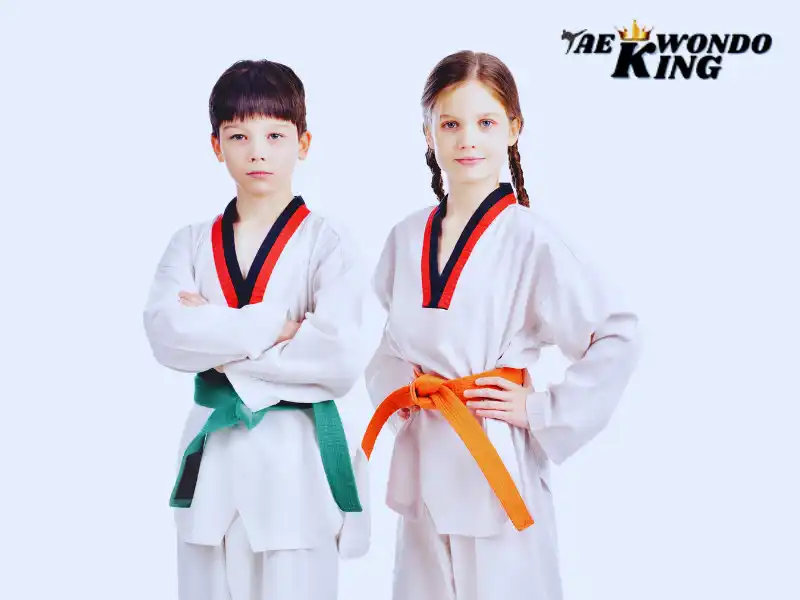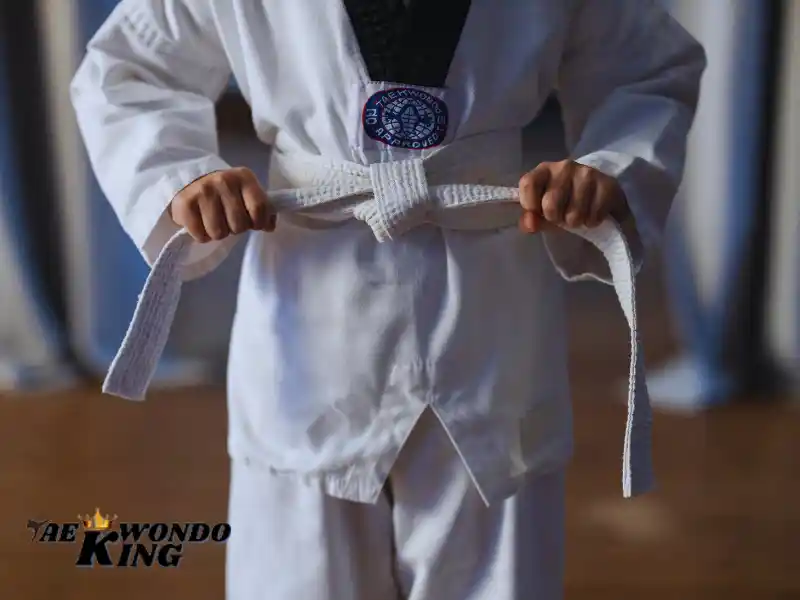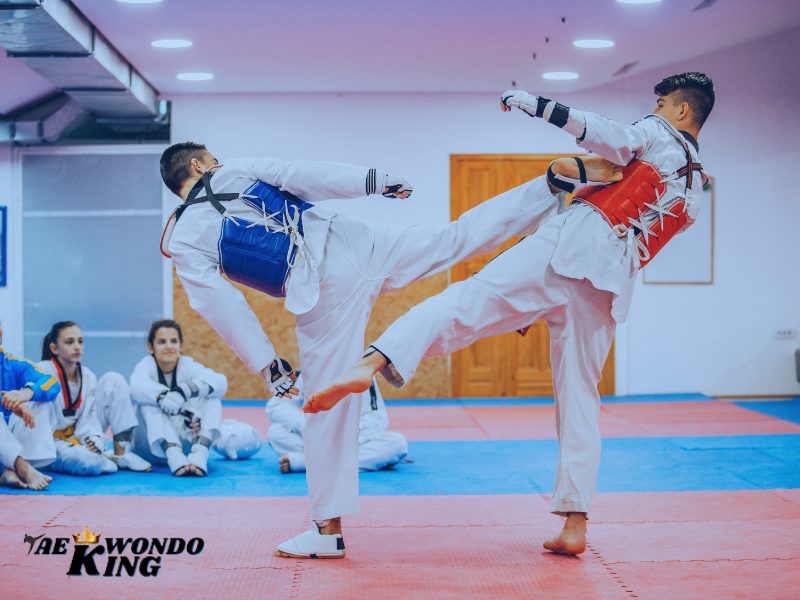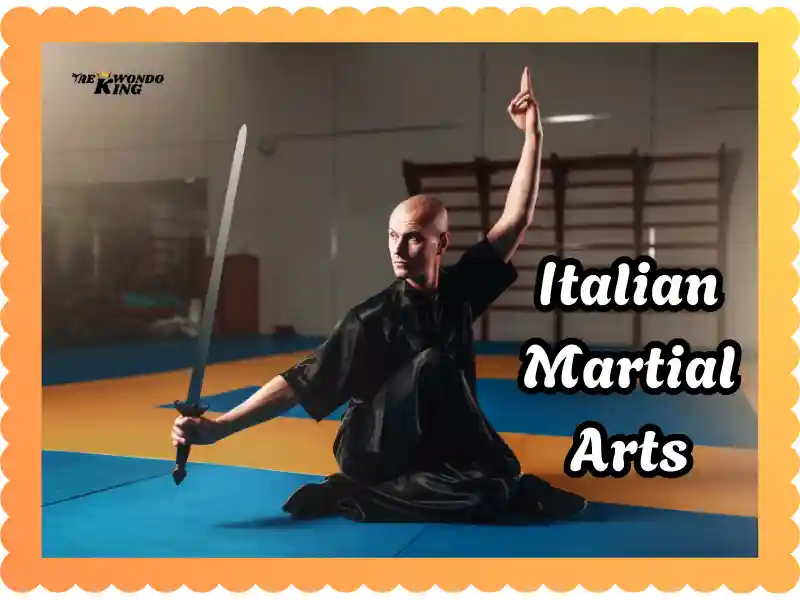
Italian martial arts are deeply rooted in history. They have a rich tradition that spans centuries, combining skill, strategy, and philosophy. Through time, these arts have evolved, influenced by different cultures and eras. I’ve had the privilege of studying them and witnessing their powerful techniques first-hand. It’s a journey that connects the past with the present, and I’m excited to share what I’ve learned.
Italy’s combat styles have a long history. They include armed and unarmed techniques. Warriors, knights, and even modern athletes have trained in them. This article explores Italian martial arts, their history, and their modern practice.
See the latest Top-Rated Rendpas Adjustable Dumbbells Set Price Today Used by Champion.

What Are Italian Martial Arts?
Italian martial arts are combat styles that developed in Italy. Some focus on weapons, while others use hand-to-hand combat. These styles were used in duels, military battles, and self-defense.
Unlike Asian martial arts, many Italian styles focus on fencing and wrestling. They also include medieval knightly combat.
“Like a fine vino, skill in the martial arts improves with age and dedicated practice. Patience is the true vintage.”
History of Italian Martial Arts
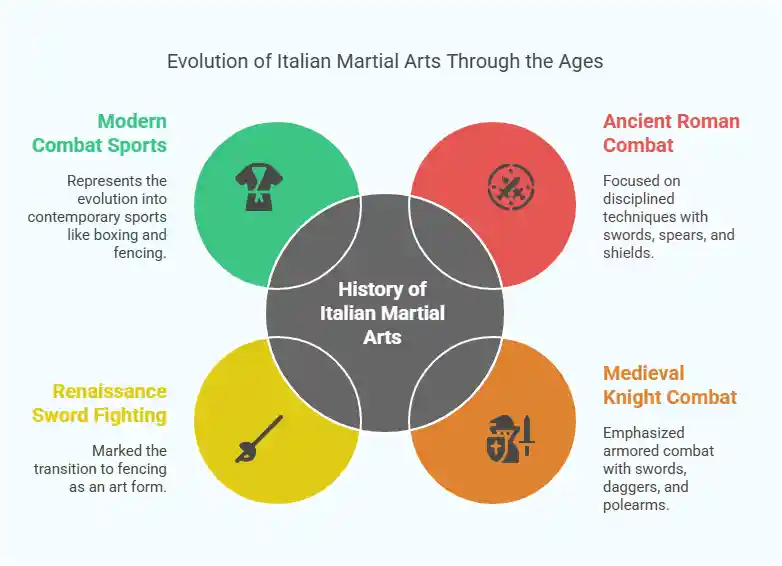
Italian fighting styles go back hundreds of years. From ancient Rome to the Renaissance, Italy has a strong warrior culture.
Ancient Roman Combat
Roman soldiers used disciplined combat techniques. They trained with swords, spears, and shields. Gladiators also had their own styles of fighting. These early techniques influenced later Italian martial arts.
Medieval Knight Combat
In the Middle Ages, Italian knights trained in armored combat. They used swords, daggers, and polearms. Many manuals from this time teach how to fight in duels and battles.
Renaissance Sword Fighting
The Renaissance was a golden age for Italian martial arts. Fencing became an art. Masters like Fiore dei Liberi and Achille Marozzo wrote detailed manuals on sword fighting. Their techniques influenced European fencing for centuries.
Modern Combat Sports
Today, Italian combat styles have evolved. Traditional methods are still practiced. Some have influenced modern sports like boxing and fencing.
Traditional Italian Martial Arts
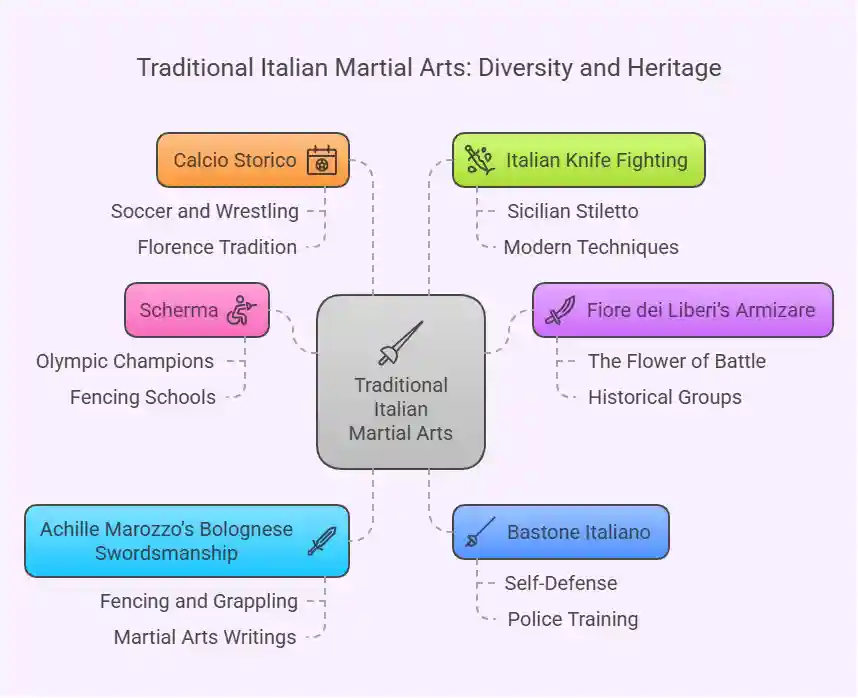
Scherma (Italian Fencing)
Scherma is one of the most famous Italian martial arts. It focuses on sword fighting. There are different types of fencing, including:
- Rapier fencing – A fast and elegant style used in duels.
- Sabre fencing – A more aggressive style with slashing attacks.
- Foil fencing – A sport version with strict rules.
Italy has produced many Olympic fencing champions. The country’s fencing schools are world-famous.
Fiore dei Liberi’s Armizare
Fiore dei Liberi was a 14th-century Italian master. His book, The Flower of Battle, is one of the oldest martial arts manuals.
Armizare includes:
- Longsword combat – Powerful and precise sword strikes.
- Dagger fighting – Close-range self-defense techniques.
- Grappling – Throws and joint locks for unarmed combat.
Armizare is still practiced today by historical martial arts groups.
Achille Marozzo’s Bolognese Swordsmanship
Marozzo was a 16th-century master. He wrote about Italian martial arts, especially sword and buckler fighting. His style mixes fencing and grappling.
Italian Stick Fighting (Bastone Italiano)
Bastone Italiano is a traditional stick-fighting art. It uses a long wooden stick for strikes and blocks. It was used for self-defense in rural Italy.
Today, Bastone Italiano is still practiced. Some police forces train in it for crowd control.
Calcio Storico (Historical Football Combat)
Calcio Storico is a mix of soccer, wrestling, and boxing. It started in the 16th century. Players try to score goals while fighting opponents.
The game is still played in Florence today. It is one of the unique Italian martial arts traditions.
Italian Knife Fighting (La Paranza and Sicilian Stiletto Fighting)
Knife fighting has a long history in Italy. The Sicilian stiletto was a common self-defense weapon. Knife duels were a way to settle disputes.
Modern versions of Italian martial arts include knife defense techniques.

Modern Italian Martial Arts
“To move with ardore and intellect – this is the Italian way of the warrior. Passion ignites the spirit, but thought guides the blade.”
Italian Boxing (Pugilato Italiano)
Boxing has deep roots in Italy. Ancient Romans had a form of boxing called pugilatus. Today, Italian boxers are known worldwide.
Italian boxing focuses on:
- Quick footwork
- Precise punches
- Strong defense
Many Italian boxers have won world championships.
Italian Judo and Jiu-Jitsu
Judo and Brazilian Jiu-Jitsu are popular in Italy. Many gyms teach grappling and submission techniques.
Some schools mix these styles with traditional Italian martial arts.
Kickboxing and Muay Thai in Italy
Kickboxing has grown in Italy. Many fighters train in both Western kickboxing and Muay Thai. These striking arts mix well with Italian fencing footwork.
How to Learn Italian Martial Arts
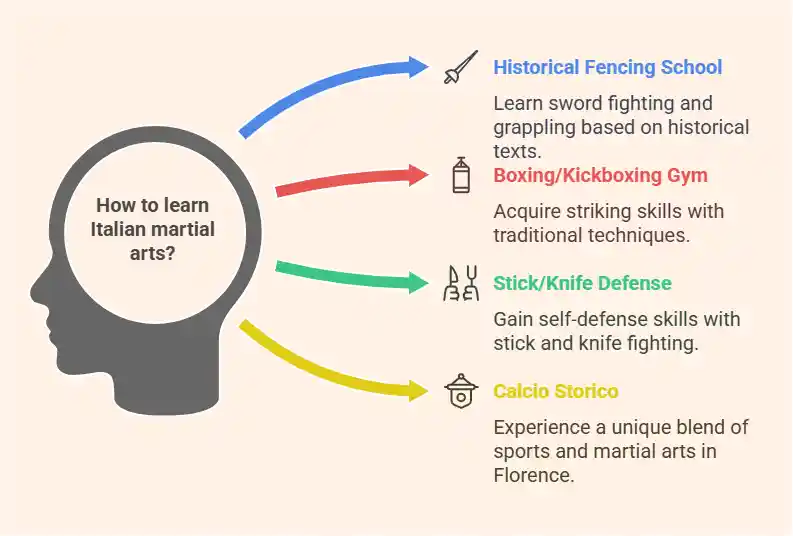
Find a Historical Fencing School
Many groups teach Italian martial arts based on historical texts. These schools focus on sword fighting and grappling.
Join a Boxing or Kickboxing Gym
Italian boxing is a great way to learn to strike. Many kickboxing gyms also teach traditional techniques.
Train in Stick Fighting or Knife Defense
Some martial arts schools offer classes in stick and knife fighting. These are useful for self-defense.
Try Calcio Storico
If you visit Florence, you can watch or even train in Calcio Storico. It is a mix of sports and Italian martial arts.
Benefits of Learning Italian Martial Arts
“A true duel is fought first in the mind. Cultivate coraggio and clarity, for these are your finest weapons.”
Self-Defense Skills
Many Italian martial arts focus on real-world combat. Learning these techniques can help in self-defense situations.
Improved Fitness
Training builds strength, endurance, and coordination. Martial arts are a great way to stay fit.
Mental Discipline
Like all martial arts, Italian fighting styles require focus. They teach patience, strategy, and confidence.
Connection to History
Practicing Italian martial arts connects you to a rich tradition. It is a way to experience history firsthand.
Italian Martial Arts vs. Other Martial Arts
Fencing vs. Japanese Kendo
Both use swords, but fencing is faster and more fluid. Kendo has more rigid rules.
Italian Martial Arts vs. Asian Martial Arts
Italian styles focus more on weapons, while Asian arts include many empty-hand techniques.
Boxing vs. Muay Thai Italian
Italian boxing has fast hands and footwork. Muay Thai uses more kicks and clinch fighting.
Italian Wrestling vs. Brazilian Jiu-Jitsu
Italian wrestling focuses on throws and takedowns. BJJ emphasizes ground control and submissions.
Final Thoughts
Italian martial arts have a long and rich history. From ancient Rome to modern combat sports, Italy has influenced the world of fighting.
Whether you love fencing, boxing, or grappling, there is an Italian style for you. Training in these arts improves fitness, self-defense skills, and historical knowledge.
Want to learn more? Find a local school or start practicing today!
See the latest Top-Rated Rendpas Adjustable Dumbbells Set Price Today Used by Champion.

FAQs
Yes! Fighters like Marvin Vettori represent Italy in the UFC. He’s known for his toughness and grit. Learn more about Italian MMA stars.
Yes. Europe has styles like fencing, savate, and historical sword arts. Learn more about Europe’s rich martial arts history.
Yes. Savate is a French kickboxing style using punches and kicks. Learn more about how France fights with flair.
Italian boxing focuses on footwork, fast combos, and smart defense. It’s smooth and sharp. Learn more about Italy’s boxing flavor.
Yes. Italian arts include Scherma (fencing) and historical sword fighting. Learn more about Italy’s martial roots.
It depends on style. Japan leads in Karate and Judo, while Thailand rules Muay Thai. Learn more about the top martial arts nations.
Romans trained in Pugilatus (boxing) and Gladiator combat. These were brutal and real. Learn more about Rome’s warrior skills.
There’s no clear #1, but names like Bruce Lee and modern champions like Jon Jones top many lists. Learn more about martial arts legends.
Brazilian Jiu-Jitsu and Muay Thai are key in MMA. But MMA blends many styles. Learn more about what shapes modern combat.

Founder, Owner, and CEO of TaekwondoKing.
He is one of the top 100 martial artists in the World and among the top 20 referees in Bangladesh.
Ehatasamul Alom is an esteemed Kukkiwon Certified Taekwondo 3rd Dan Black Belt with over 15 years of experience in this dynamic martial art. Born in Rajshahi, Bangladesh, Ehatasamul’s journey with Taekwondo began at the tender age of seven. His passion led him to compete at national and international levels, where he has bagged numerous awards and honors. He is also a member of the Taekwondo National Referee Panel.
With a Bachelor’s degree in Sports Science from the prestigious Rajshahi University, Ehatasamul has a deep understanding of the technical and scientific aspects of martial arts and some other martial arts.
In 2022, Ehatasamul created the “TaekwondoKing.com” to share his knowledge, Free Resources, Values, and Real experiences. His articles focus on Taekwondo training techniques, competition strategies, Sport Products Reviews, and the art’s rich history and philosophy. He also writes about the importance of mental fortitude and discipline, key aspects of his teaching philosophy. He has already launched many sports, Taekwondo, and health-related Free online tools. His goal is to inspire both beginners and seasoned practitioners worldwide through insightful and engaging content.
If you need any help, contact Ehatasamul Alom at any time.

